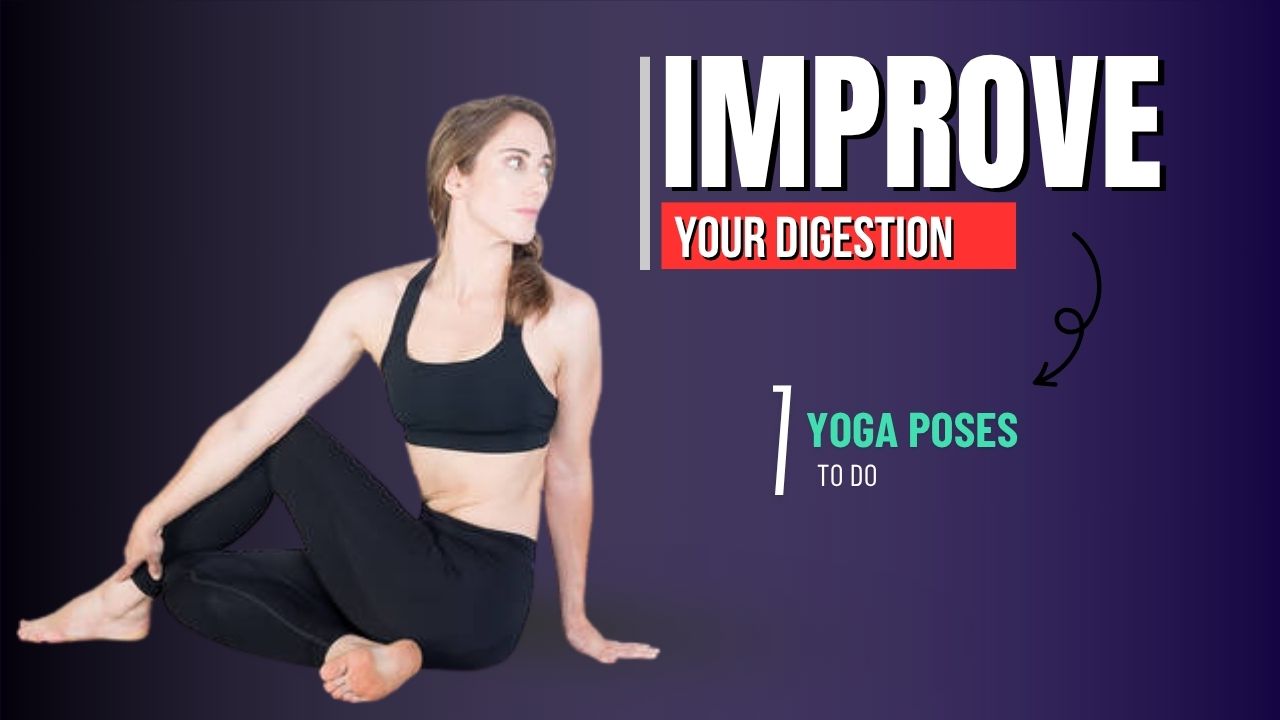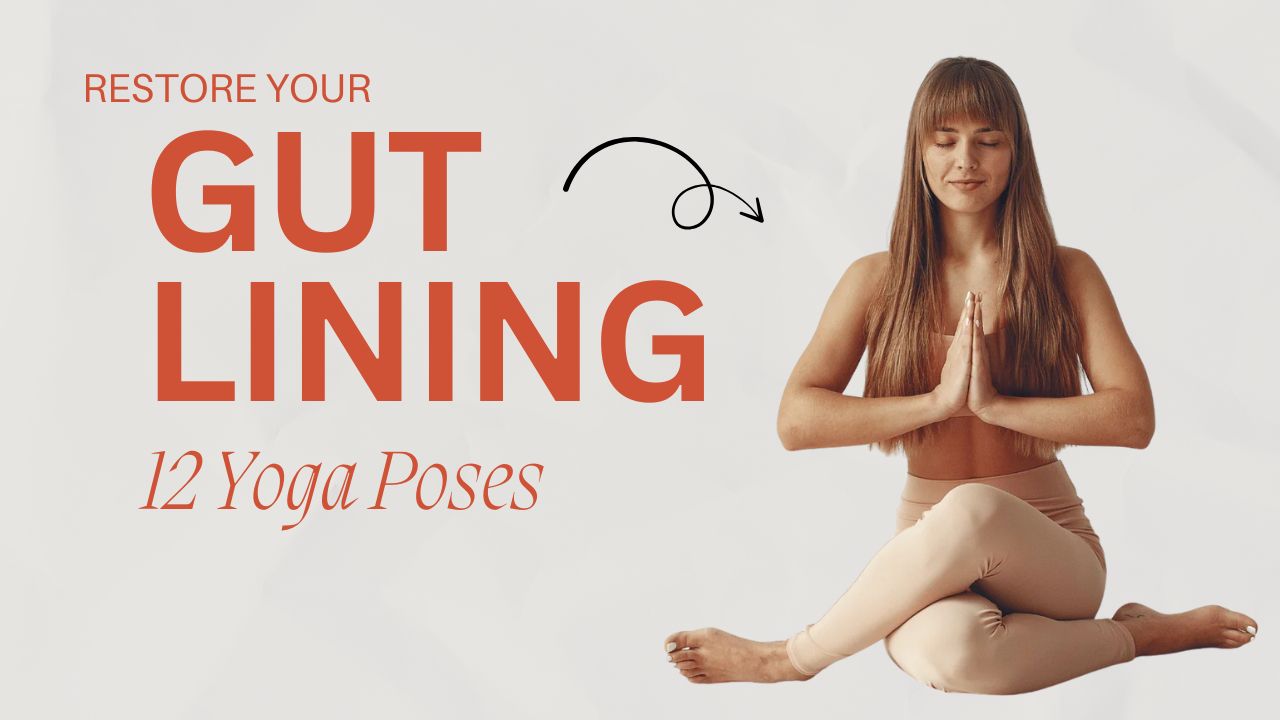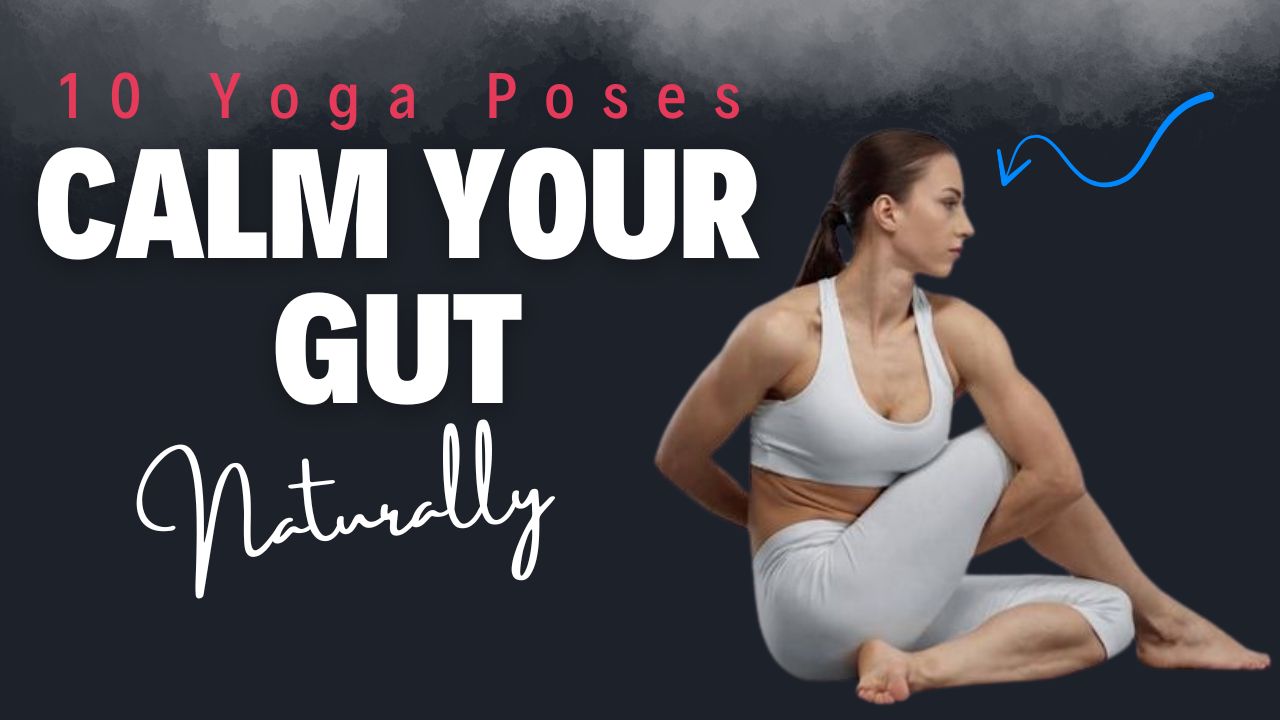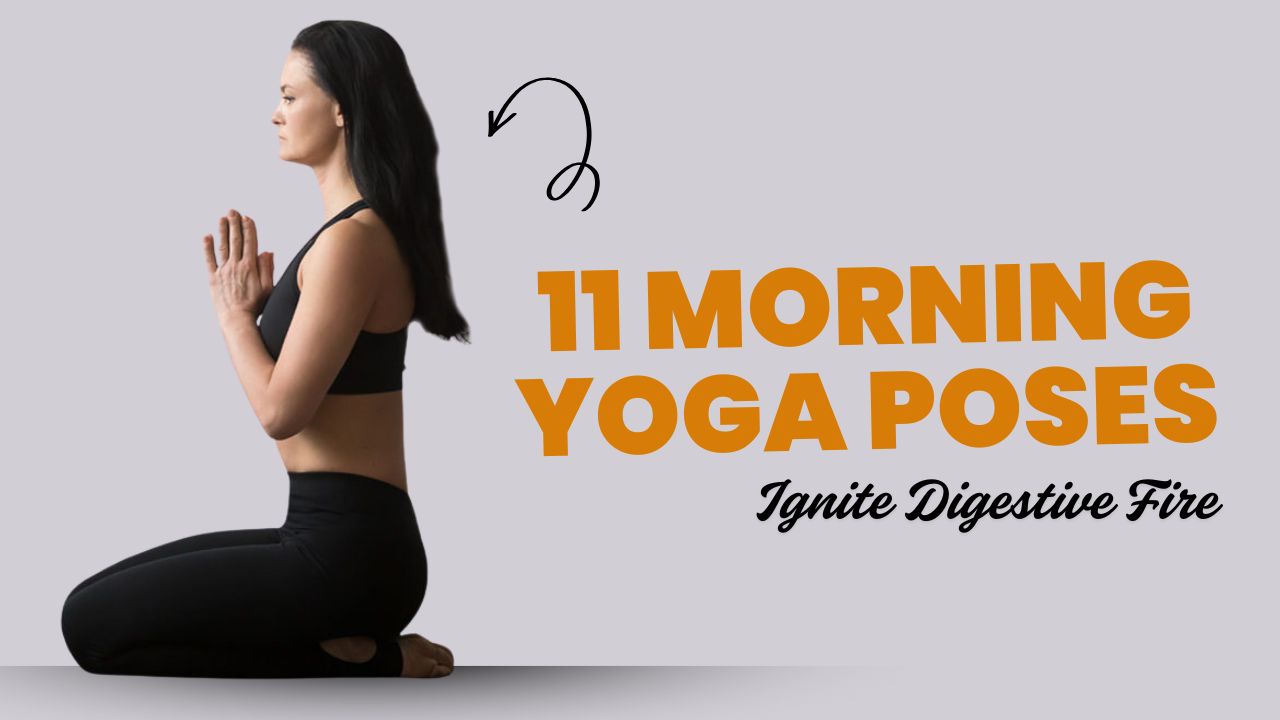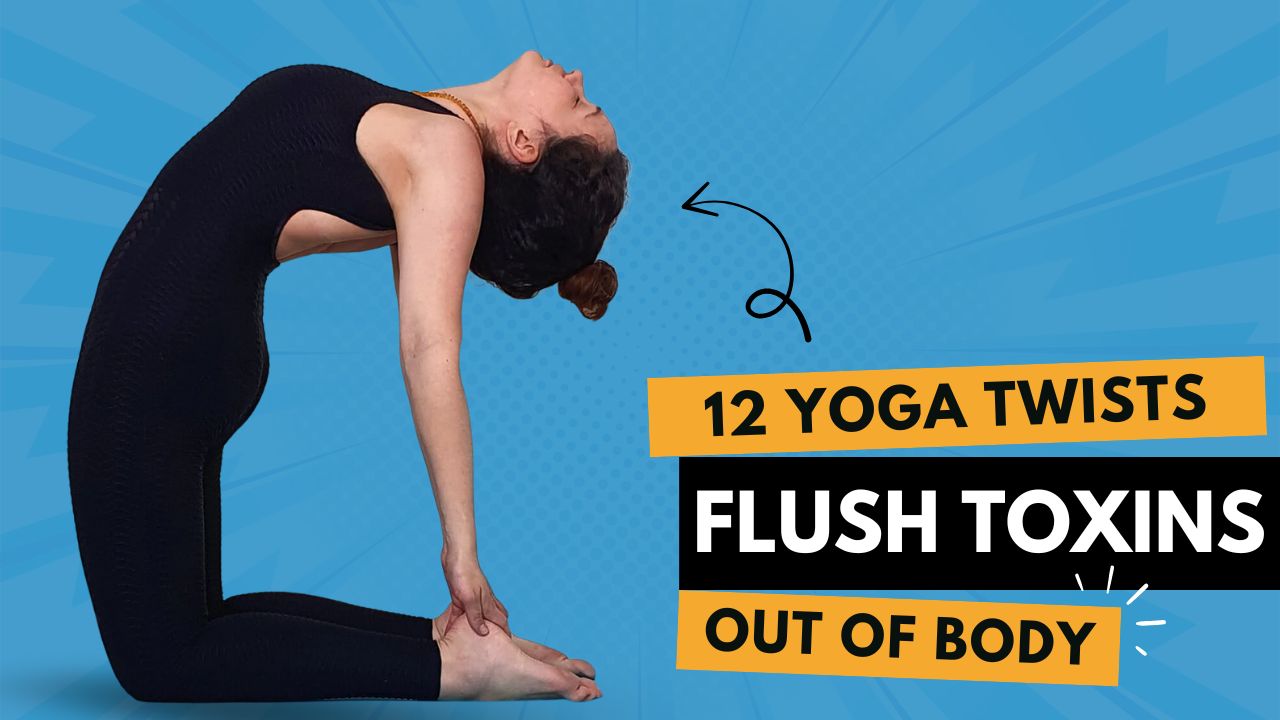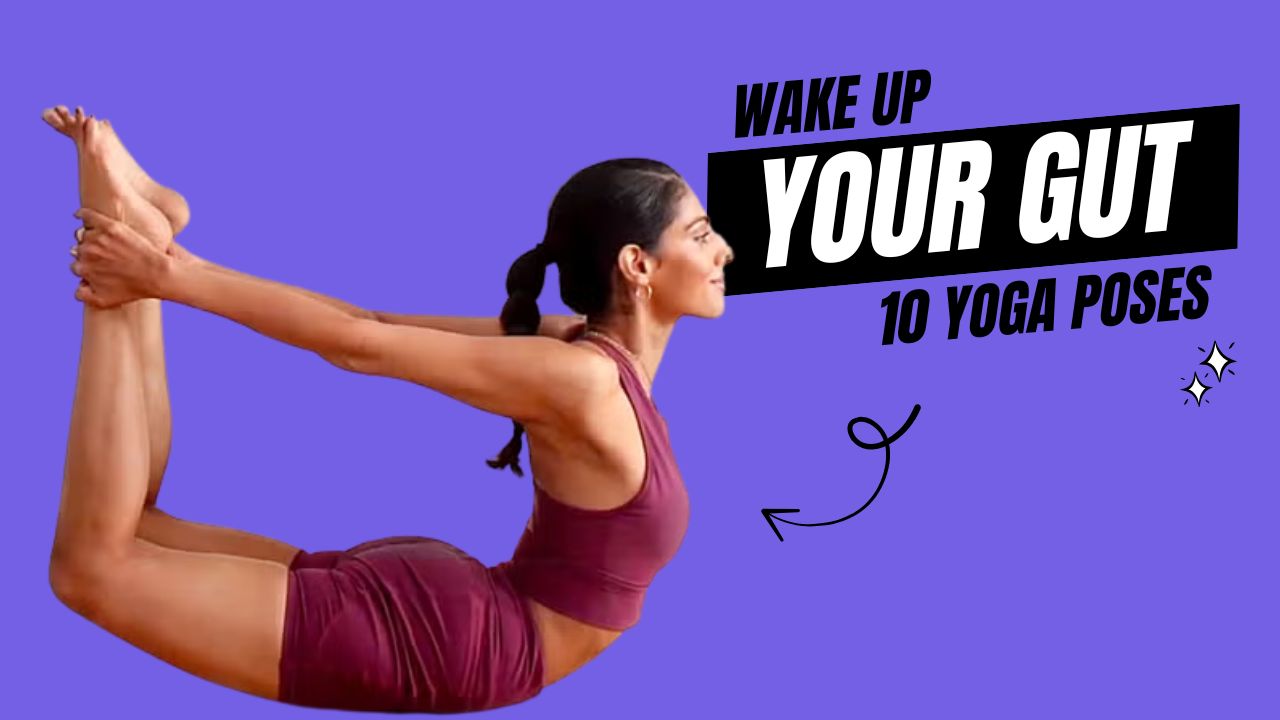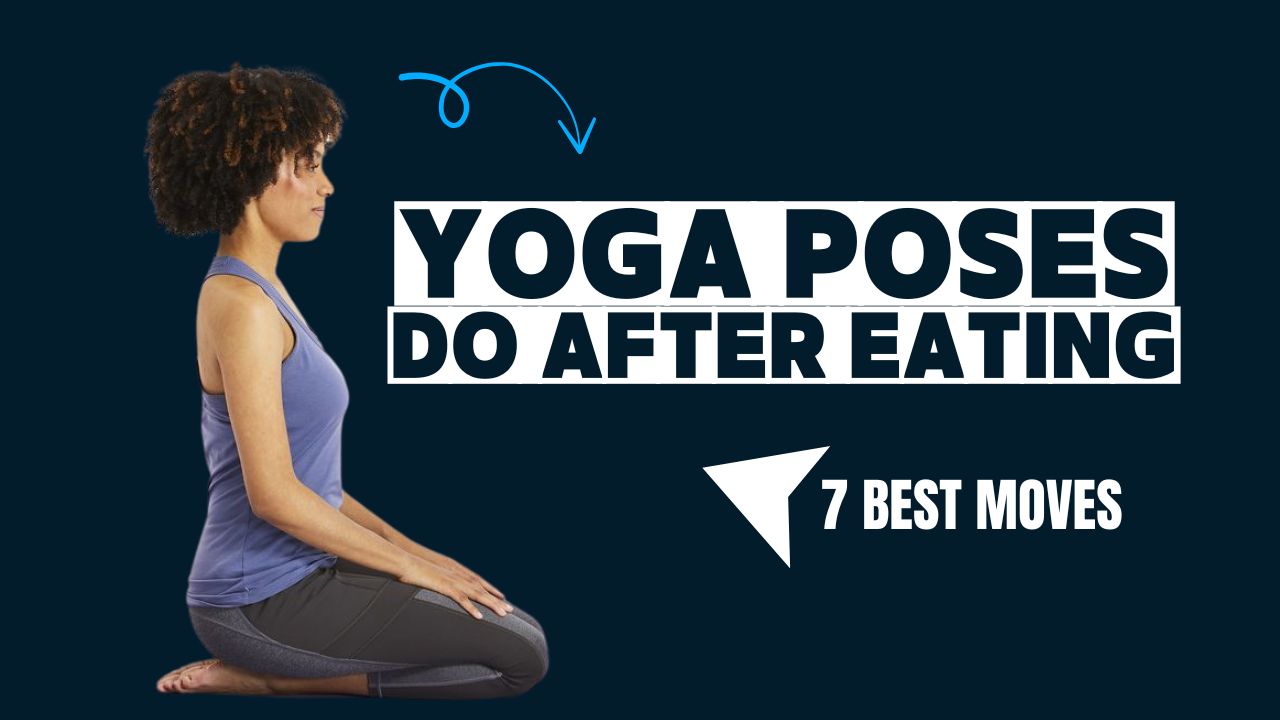Do you know that your gut has its own “second brain”?
It’s called the enteric nervous system, and it’s so powerful that it communicates directly with your brain, influencing your mood, digestion, and even stress levels.
That’s why when your gut is in distress, you often feel anxious—and vice versa. For people suffering from Irritable Bowel Syndrome (IBS), this connection can be especially frustrating. But there’s a natural, holistic way to soothe your symptoms: yoga.
In this guide, you’ll discover 10 science-backed yoga poses that help reduce IBS symptoms by calming your gut, stimulating digestion, and easing inflammation.
Plus, you’ll learn how to perform each pose correctly, how it works for your digestive health, and what to keep in mind to make the most of your practice.

Table of Contents
What Can Happen After 30 Days of Practicing These Yoga Poses
| Positive Changes | Why It Happens |
|---|---|
| Reduced bloating and gas | Gentle twists and compressions improve digestion and reduce trapped air |
| Fewer IBS flare-ups | Regular practice lowers stress, a key trigger for IBS |
| Improved bowel movements | Poses stimulate the intestines and support healthy elimination |
| Better stress management | Yoga activates the parasympathetic (relaxation) response, calming the nervous system |
| Improved sleep quality | Relaxation poses reduce nighttime stress and physical discomfort |
| Enhanced body awareness and posture | Daily practice builds core strength and mindfulness around abdominal tension |
| Increased energy and reduced fatigue | Less digestive discomfort allows your body to use energy more efficiently |
| Lower reliance on medication (for some individuals) | Natural regulation of gut function may reduce symptom severity |
| More positive relationship with your body and symptoms | Yoga promotes non-judgmental awareness and acceptance of your body’s needs |
Do & Don’t for Practicing Yoga with IBS
| Do | Don’t |
|---|---|
| Practice on an empty stomach or wait 2–3 hours after eating | Don’t force your body into deep stretches or twists |
| Focus on deep, slow breathing during each pose | Don’t hold your breath or rush through the practice |
| Start with gentle, restorative poses if you’re new or in a flare-up | Don’t do intense core or high-impact yoga styles during symptoms |
| Use props like cushions or blocks to support your body | Don’t compare your flexibility or progress with others |
| Stay consistent—short daily practice is better than occasional long ones | Don’t skip sessions just because you feel slightly better |
| Modify poses to suit your body and comfort level | Don’t ignore pain, sharp cramps, or dizziness—always listen to your body |
| Consult with a healthcare provider if needed before starting | Don’t treat yoga as a complete replacement for medical advice |
10 Yoga Poses to Calm Our Gut
1. Apanasana (Knees-to-Chest Pose)
Why it helps: Known as the wind-relieving pose, Apanasana gently massages your abdominal organs and helps release trapped gas and bloating.
How to do it:
- Lie on your back with both legs extended.
- Inhale, then exhale and bring both knees toward your chest.
- Wrap your arms around your shins.
- Hold for 30–60 seconds while breathing deeply.
Tip: You can gently rock side to side to stimulate deeper release and comfort.
2. Supta Matsyendrasana (Supine Twist)
Why it helps: This gentle twist supports detoxification by wringing out the abdominal organs and improving elimination.
How to do it:
- Lie flat on your back.
- Bring your right knee toward your chest.
- Cross it over to the left side of your body while keeping your shoulders on the floor.
- Stretch your right arm out to the side and gaze to the right.
- Hold for 1–2 minutes, then switch sides.
Did you know? Twists are often referred to as “internal massages” for your organs.
3. Setu Bandhasana (Bridge Pose)
Why it helps: Activates the parasympathetic nervous system—your rest-and-digest mode—and strengthens abdominal muscles to support gut health.
How to do it:
- Lie on your back with knees bent and feet hip-width apart.
- Press your feet and arms into the mat.
- Inhale and lift your hips upward.
- Hold for 5–8 breaths, then slowly lower down.
Modify: Place a yoga block under your sacrum for added support.
4. Balasana (Child’s Pose)
Why it helps: Calms the nervous system and relieves abdominal tension.
How to do it:
- Kneel and sit back on your heels.
- Fold forward with your forehead resting on the mat.
- Stretch your arms forward or alongside your body.
- Breathe deeply for 1–3 minutes.
Myth to bust: IBS symptoms only flare with food. In truth, stress is a major trigger—and Child’s Pose directly calms stress.
5. Paschimottanasana (Seated Forward Bend)
Why it helps: Stretches the lower abdomen and soothes the intestines.
How to do it:
- Sit with your legs extended in front of you.
- Inhale, lift your arms, and lengthen your spine.
- Exhale and hinge forward from the hips to reach toward your feet.
- Hold for 30–60 seconds without forcing the stretch.
Important: Keep your spine long and avoid hunching over.
6. Ardha Matsyendrasana (Half Lord of the Fishes Pose)
Why it helps: A deeper twist that improves liver function and detoxification, aiding digestion.
How to do it:
- Sit with legs extended.
- Bend your right knee and cross it over your left leg.
- Place your right hand behind you and left elbow on the outside of the right knee.
- Inhale to lengthen, exhale to twist.
- Hold for 30–60 seconds and switch sides.
Fun fact: This pose is named after a legendary yogi believed to have discovered the secrets of Hatha yoga.
7. Marjaryasana–Bitilasana (Cat-Cow Stretch)
Why it helps: Promotes spinal flexibility and massages internal organs to help move food and gas through the intestines.
How to do it:
- Come onto your hands and knees in a tabletop position.
- Inhale, arch your spine (Cow).
- Exhale, round your spine (Cat).
- Move with your breath for 1–2 minutes.
Best time to try it: First thing in the morning to wake up digestion gently.
8. Viparita Karani (Legs-Up-The-Wall Pose)
Why it helps: Enhances blood flow to the digestive organs and activates relaxation.
How to do it:
- Sit sideways next to a wall, then swing your legs up while lying back.
- Adjust your hips close to the wall.
- Let your arms relax at your sides.
- Stay in the pose for 5–10 minutes.
Bonus: This pose is excellent after meals if you suffer from indigestion or reflux.
9. Pawanmuktasana (Wind-Relieving Pose – One Leg at a Time)
Why it helps: Especially effective for releasing gas and reducing cramps.
How to do it:
- Lie on your back.
- Bend your right knee and bring it to your chest.
- Wrap your arms around your shin and hold for 30 seconds.
- Switch to the left leg.
Pro tip: You can repeat 2–3 rounds per leg for maximum gut relief.
10. Shavasana (Corpse Pose)
Why it helps: Deeply calms the entire nervous system, allowing your body to rest, digest, and heal.
How to do it:
- Lie on your back with arms and legs comfortably spread.
- Close your eyes and breathe naturally.
- Stay here for 5–10 minutes in stillness.
Note: This is not just “lying down.” True Shavasana requires conscious relaxation of every part of the body.
Final Thoughts
Yoga doesn’t just treat the symptoms of IBS—it addresses the root causes by restoring balance to your gut-brain axis.
These 10 poses, when practiced consistently, can ease bloating, regulate digestion, and help you better manage stress, which is often at the core of IBS flare-ups.
Whether you’re newly diagnosed or have been struggling with IBS for years, integrating a mindful yoga practice into your routine can be a game-changer. Remember, always listen to your body, start slow, and build gradually
Frequently Asked Questions (FAQs)
Can yoga really help with IBS symptoms?
Yes, yoga can significantly help manage IBS symptoms. Certain poses stimulate digestion, ease abdominal tension, and activate the parasympathetic nervous system (the body’s “rest and digest” mode), which is crucial for calming gut inflammation and reducing stress—a major trigger for IBS.
How often should I practice yoga for IBS relief?
For noticeable results, aim to practice at least 3–5 times a week. Even a short daily session of 15–20 minutes can bring consistent relief when done mindfully.
Is it safe to do yoga during an IBS flare-up?
Yes, but stick to gentle and restorative poses like Child’s Pose, Legs-Up-the-Wall, and Supine Twist. Avoid intense core work or strong twists during flare-ups, as they may aggravate discomfort.
Do I need to be flexible to try these yoga poses?
Not at all. These poses are beginner-friendly and focus more on breath and body awareness than flexibility. Use props like cushions or blocks if needed for added comfort.
Should I practice yoga before or after meals?
It’s best to practice yoga on an empty stomach or wait at least 2–3 hours after a meal. Some gentle postures like Legs-Up-the-Wall can be done after eating, especially for easing indigestion or bloating.
Can yoga replace medication for IBS?
Yoga is a complementary therapy, not a replacement for prescribed treatments. Many people find they can reduce their reliance on medication over time with regular practice, but always consult your healthcare provider before making changes to your treatment plan.
How long will it take to see improvement?
Some individuals notice relief within a few sessions, while others may take a few weeks of consistent practice. IBS is deeply connected to stress and lifestyle, so long-term commitment is key.
Are there specific poses I should avoid if I have severe bloating or cramps?
Yes. Avoid deep backbends, intense abdominal work, or strong inversions during severe bloating. Stick to restorative and twisting poses that gently massage the gut.
Can stress really trigger IBS?
Absolutely. Stress activates the sympathetic nervous system, disrupting digestion and gut motility. That’s why mind-body practices like yoga and breathwork are essential tools for managing IBS naturally.
Do I need to attend a yoga class, or can I do this at home?
You can safely practice at home using videos or guides, especially for gentle poses. However, if you’re unsure of your form or need personalized modifications, attending a few sessions with a certified yoga instructor can be helpful.


